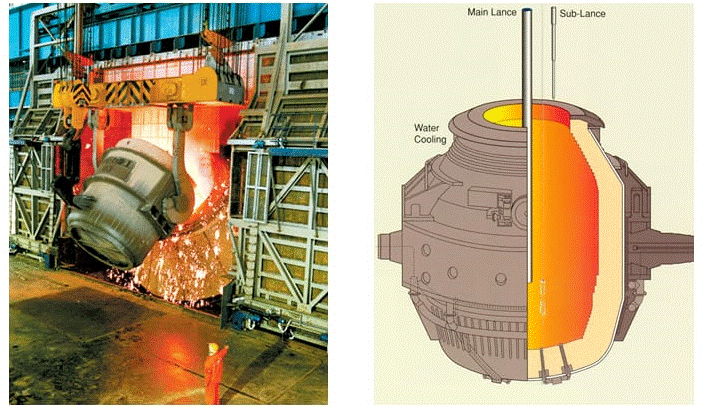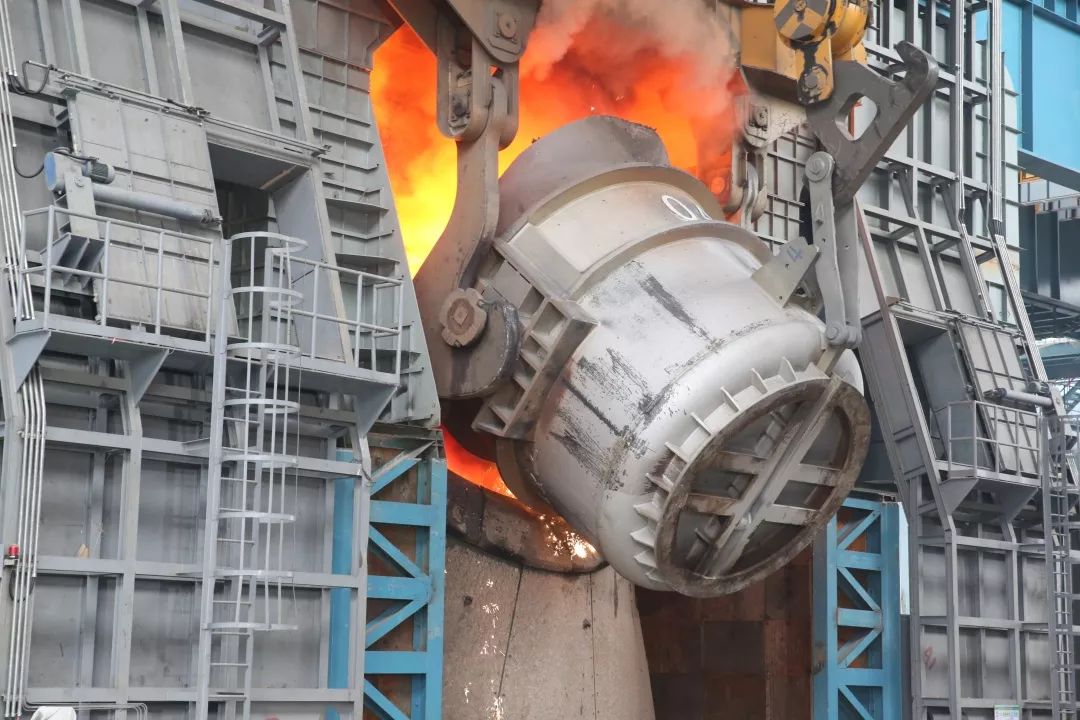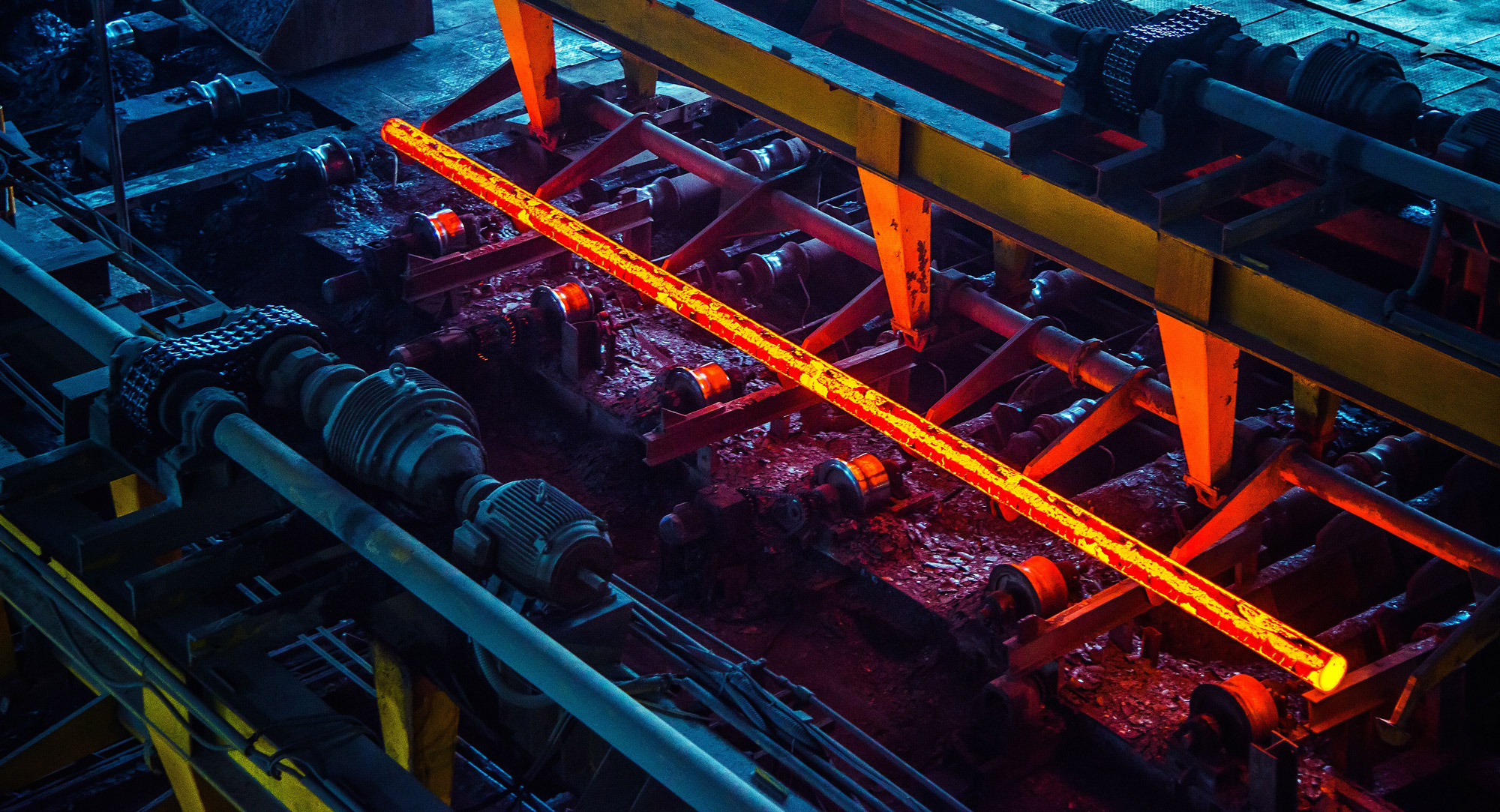Common knowledge about slag splashing and furnace protection in converter steelmaking
2024.6.12
With the continuous development of converter steelmaking technology, today’s steel industry has gradually transitioned from the previous rough management model to a low-cost, low-energy consumption, and high-efficiency production model. With the gradual increase in production pressure, especially the continuous reduction in molten iron consumption of various enterprises, converter furnace condition maintenance has long become a very important topic, which has led to the continuous in-depth research of slag splashing furnace protection technology. This article briefly introduces some common knowledge about slag splashing and furnace protection:
1.The main components and functions of converter refractory materials
The converter bricks used today are mainly magnesia carbon bricks, with a carbon content of generally 14-18%. The advantages of magnesia carbon bricks are:
(1) They contain carbon inside and are not wetted by slag, which can resist slag erosion. At the same time, the binder forms a carbon network after solidification, which plays a skeleton role; (2) Carbon has good thermal conductivity and can transfer heat evenly, avoiding cracks in magnesia carbon bricks due to uneven heating.

2.Formation mechanism of slag splashing layer
The formation of the slag splashing layer of the converter can be roughly divided into three steps:
(1) The part with better fluidity in the slag first combines with the furnace bricks, and penetrates, sinters and adheres along the fine cracks and pores on the surface of the furnace bricks; (2) After the bonding surface is formed, the high melting point minerals (dicalcium silicate, tricalcium silicate, etc.) in the slag are splashed by high-pressure nitrogen and embedded in the sintered layer formed above; (3) In the process of continuing to spray nitrogen, the slag layer formed above continues to cool and solidify, forming a slag splashing layer on the furnace lining.
3.How to ensure that the slag splashing layer
Is not washed away and gradually “thickens”?
We know that the melting temperature of converter slag is only about 1450℃, and it starts to melt as early as about 1300℃. So why can the slag splashing layer exist on the furnace lining with an ambient temperature of more than 1600℃? In simple terms, it is because there is a high melting point phase in the slag (the melting point of tricalcium silicate can be as high as 2000℃ or above). During the blowing process, the low melting point phase (iron oxide, calcium silicate, etc.) in the splashing slag layer is dissolved, and the high melting point phase is left behind. This reciprocating process, after continuous blowing and splashing, will make the high melting point substances in the splashing slag layer more and more, and the low melting point substances will become less and less, thus forming a stable splashing slag layer. However, when continuous post-blowing occurs, the splashing slag layer will also fall off due to the continuous increase in iron in the slag.

4.What other functions does the splashing slag layer have besides protecting the furnace?
The splashing slag layer not only protects the furnace, but also, because there are low melting point substances in the slag layer, when adding molten iron, the low melting point substances (iron oxide, etc.) will melt into the furnace with the molten iron, and then in the early stage of blowing, it can effectively ensure the melting of the initial slag and help slag removal. This also explains why it is difficult to slag when there is no splashing slag layer in the furnace.
In high iron consumption mode, the temperature is usually sufficient. If high carbon steel is smelted, as long as the terminal carbon is grasped, the slag splashing and furnace protection are easy to operate. It is only necessary to ensure that the slag is not too sticky and the bottom of the furnace is prevented from rising. Therefore, no detailed explanation is given.
In low iron consumption mode or when smelting low carbon steel, the ferrous iron in the slag is often too high, and the slag cannot be splashed or falls off quickly after splashing. At this time, special attention should be paid to the operation.

